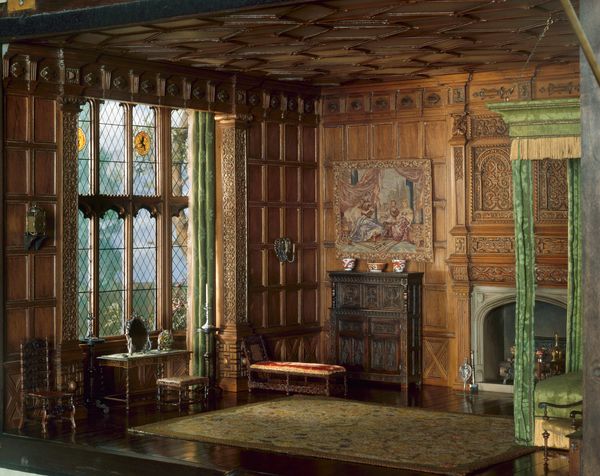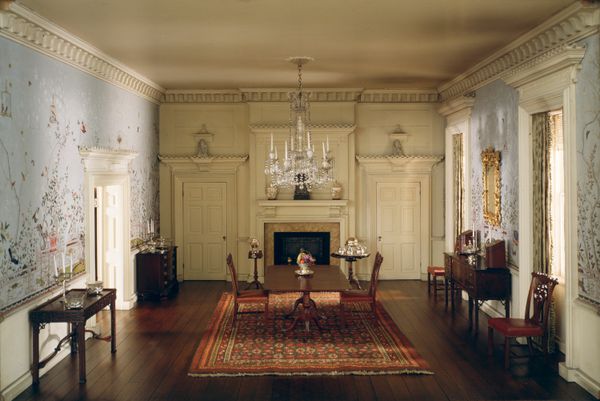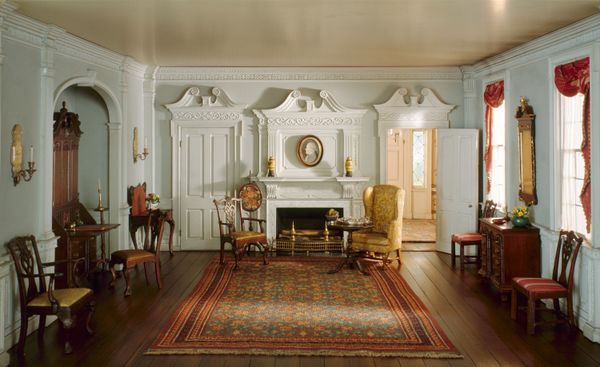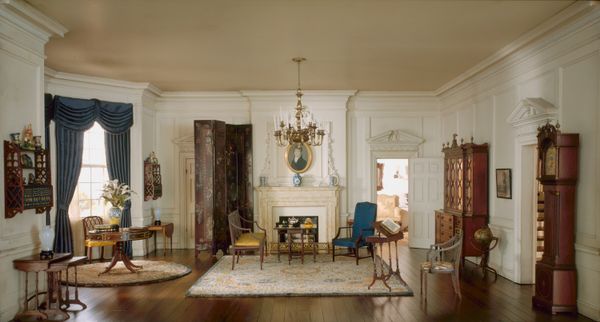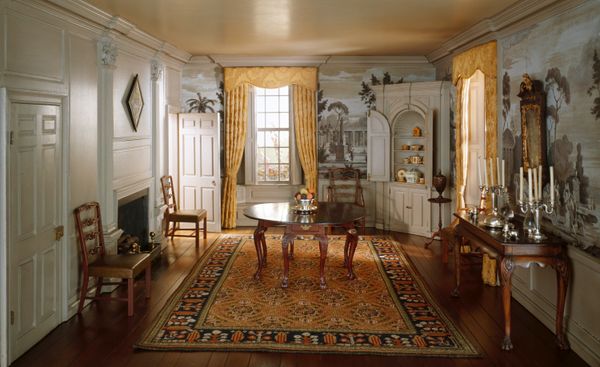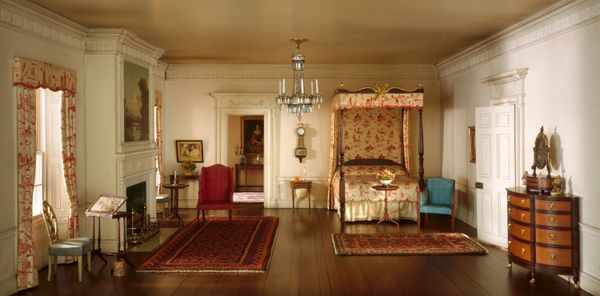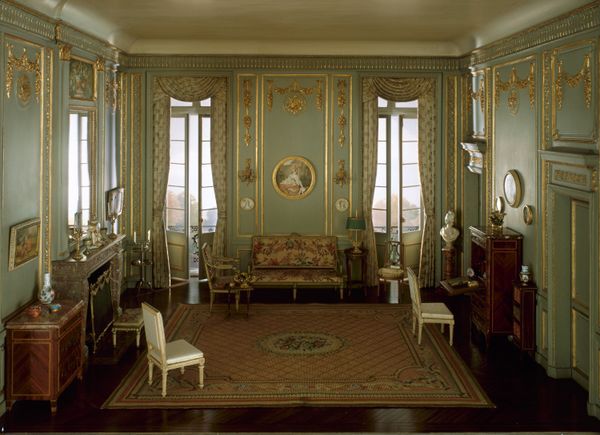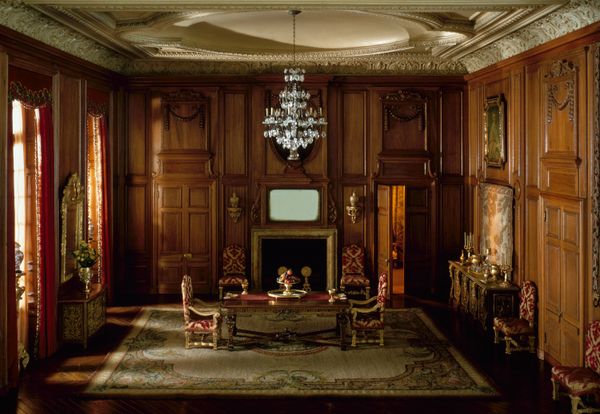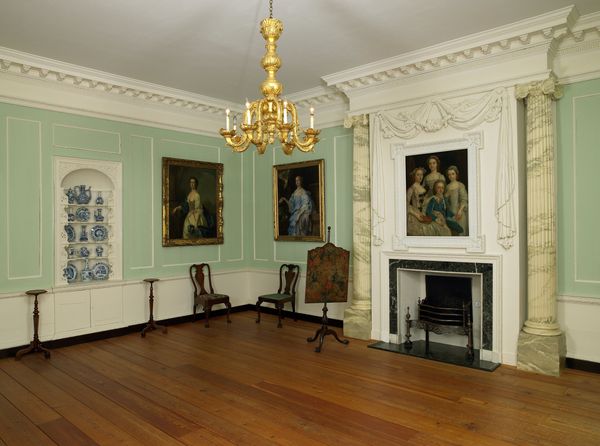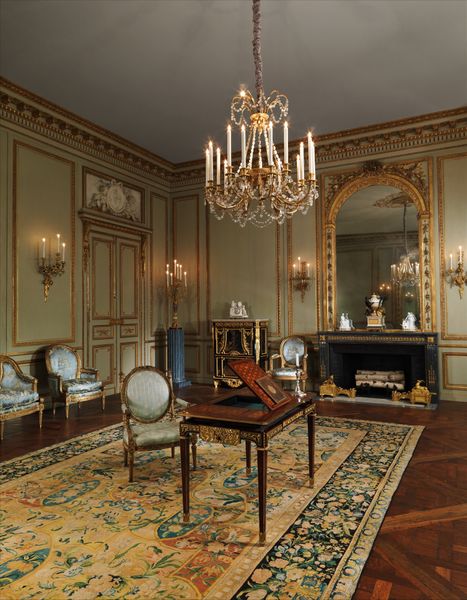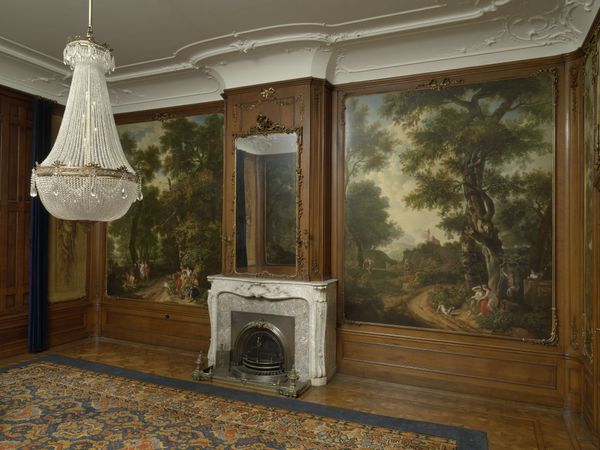
E-4: English Drawing Room of the Late Jacobean Period, 1680-1702 c. 1937
0:00
0:00
drawing, photography
#
portrait
#
interior architecture
#
drawing
#
11_renaissance
#
traditional architecture
#
photography
#
brown and beige
#
wooden interior design
#
interior architecture photography
#
united-states
#
academic-art
#
miniature
Dimensions: Interior: 16 3/4 × 26 1/2 × 21 5/8 in. (41.875 × 66.25 × 54.0625 cm) Scale: 1 inch = 1 foot
Copyright: Public Domain
Curator: At The Art Institute of Chicago, we have a piece entitled "E-4: English Drawing Room of the Late Jacobean Period, 1680-1702." It's from the Narcissa Niblack Thorne collection, circa 1937. Editor: It's so captivating, but it feels... confined. Like a beautiful secret someone built and then forgot the password to enter. A stage set, waiting for players. Curator: That sense of contained drama is part of Thorne's art, I think. She meticulously recreated interiors from different historical periods. The level of detail acts like a symbolic key, unlocking different cultural attitudes toward domesticity. Think of the dark wood paneling. Editor: Ah, the darkness! It's overwhelming. You see glimmers of gold—the chandelier, the fireplace, glints on the furniture—but mostly it’s like gazing into a very fashionable abyss. A somber reflection of power, perhaps? Curator: Indeed, darkness held cultural currency in interiors of the 17th Century. Shadow and light served a didactic role, often reflecting spiritual ideals or societal hierarchies, wealth on display through controlled artifice. Editor: Control is definitely the word. The furniture seems deliberately placed, each object asserting itself. A play for influence. Even the rug on the floor is whispering, "Observe my intricate pattern!" What is it about miniatures, anyway, that gives them this sense of suppressed longing? Curator: Miniatures carry within them the power of suggestion; each element is an icon loaded with history, inviting us to conjure grander narratives. This particular work reflects the Jacobean obsession with display and order as symbolic assurances against chaos. The shadows enhance the perceived value. Editor: So it's a sort of self-soothing mechanism, fashioning beauty as a way of taming the darkness? Even the miniature portrait above the mantel seems to exude self-possession, utterly oblivious to the grand statement of design surrounding it. I like her; I would put her in a maximalist period drama anytime. Curator: A perfect summation, I'd say! The details of presentation mirror their societal counterparts as emotional survival strategies. Editor: Makes you think differently about what goes into staging a room, doesn't it? I’ll never look at my own chaotic décor the same way again.
Comments
No comments
Be the first to comment and join the conversation on the ultimate creative platform.

